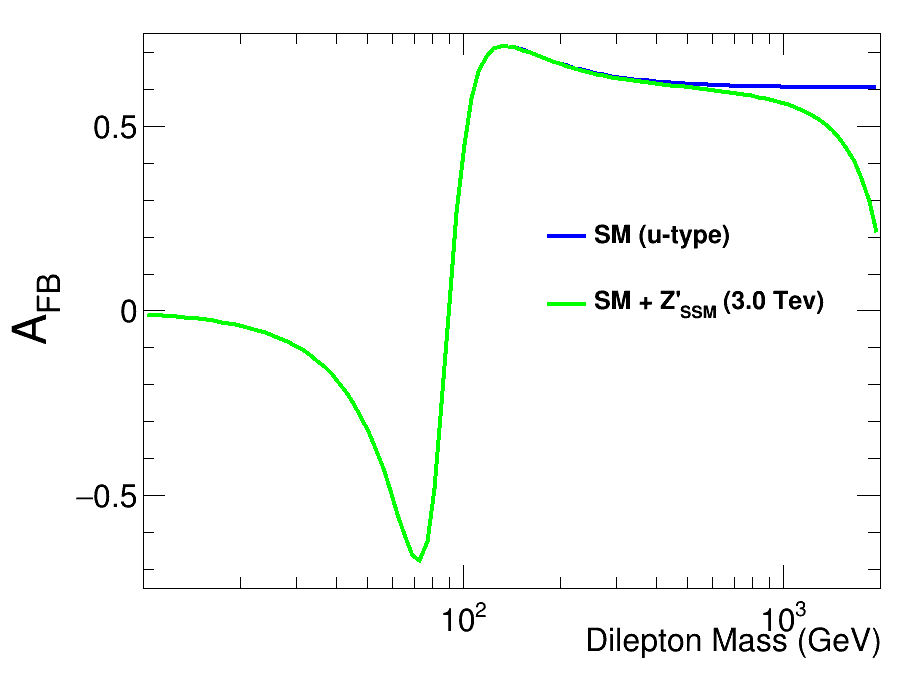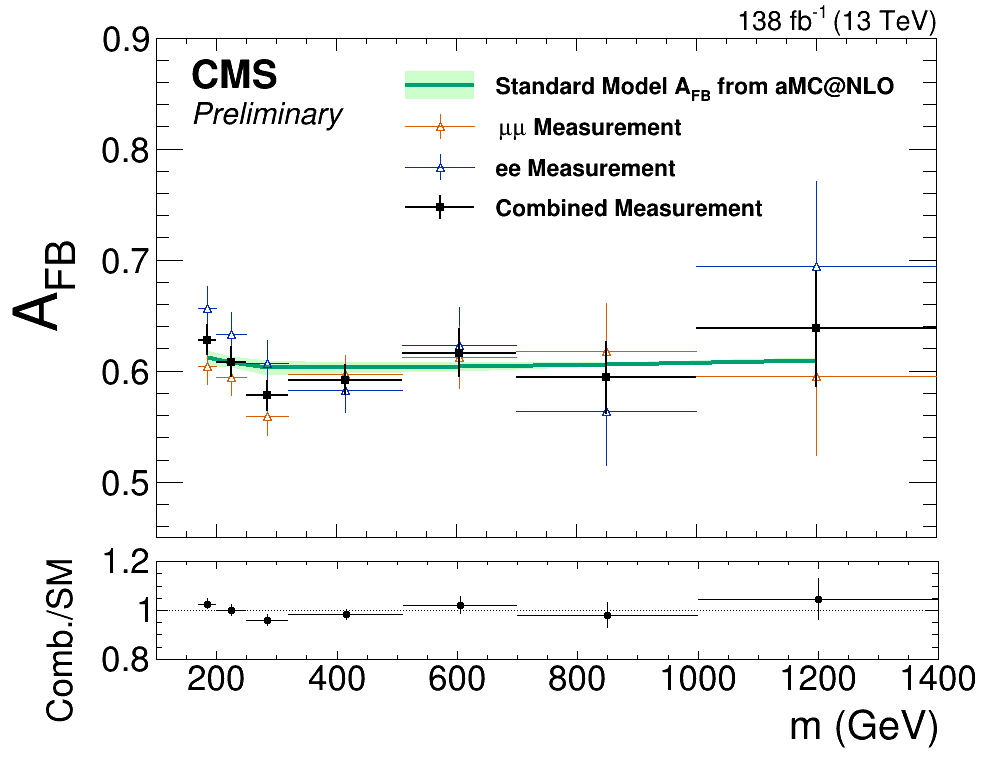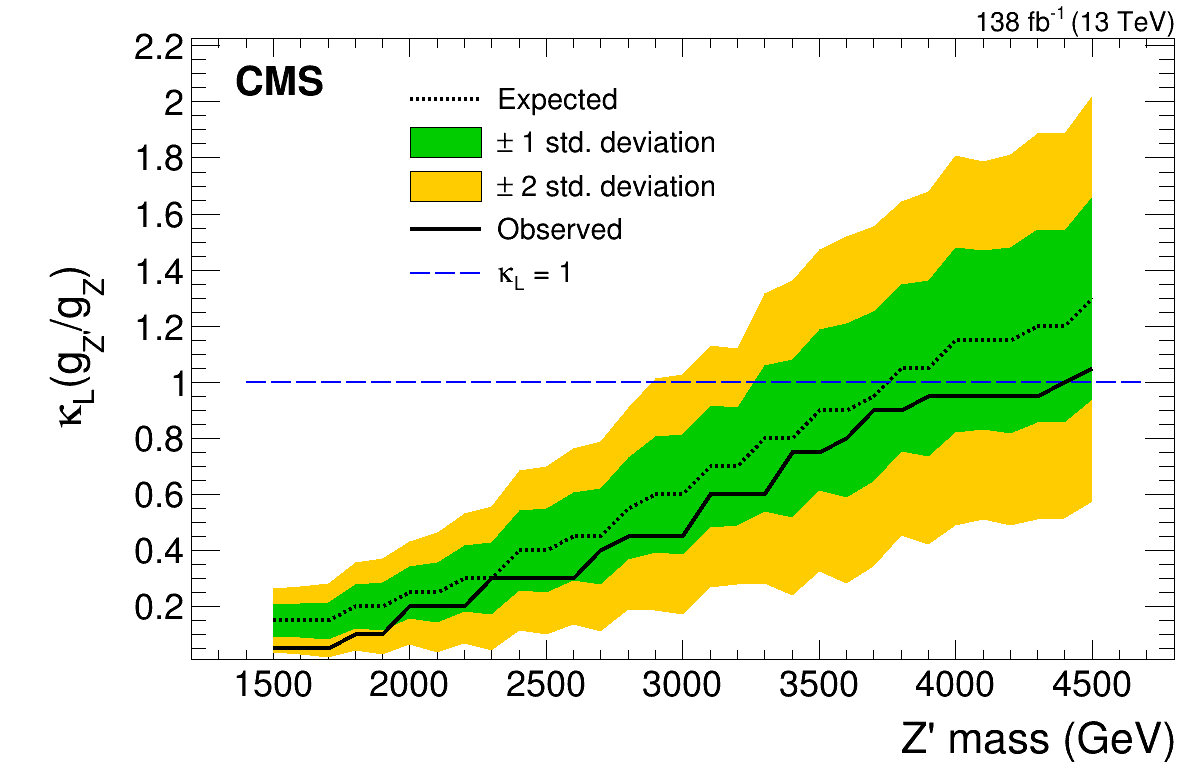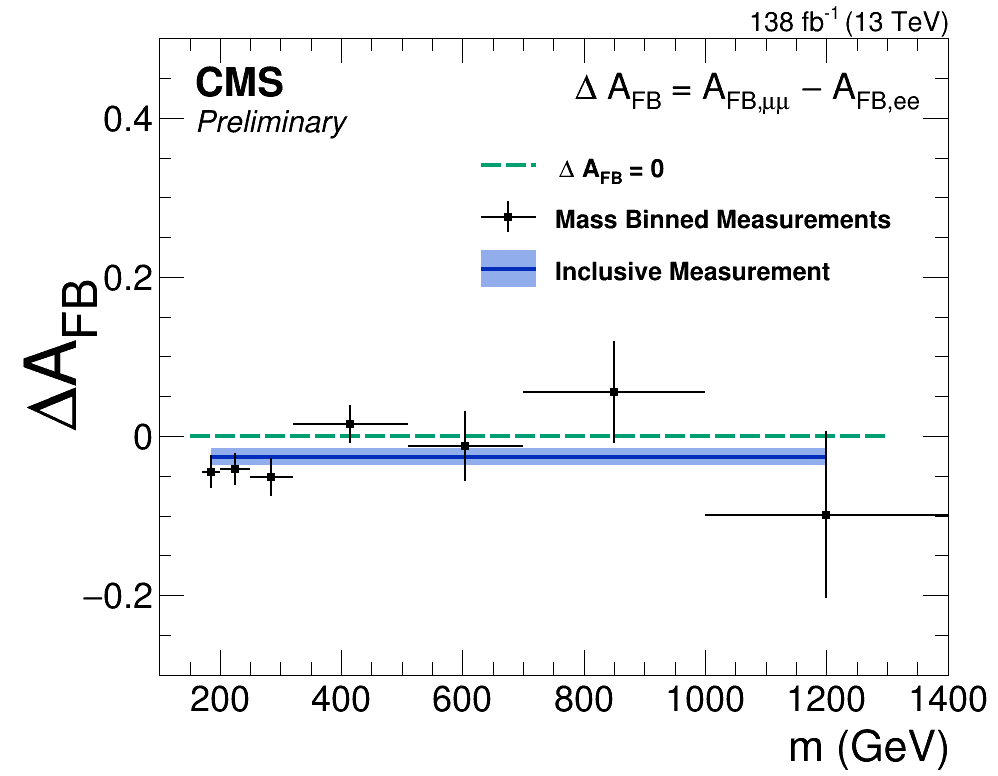Parity Violation
Measuring the Drell-Yan forward-backward asymmetry with CMS

When you look at yourself in the mirror, you appear the same except all of your features are ‘flipped’. Similarly, your right hand and your left hand are mirror version of each, you can’t rotate one to match the other, but if you mirrored one it would. The name for this mathematical symmetry is called ‘parity’. In the 1950’s it was discovered that shockingly the laws of physics violate parity! In a famous experiment Chien-Shiung Wu showed that weak nuclear force treats, ‘mirrored’ versions of particles differently than regular ones. At the time, this was quite surprising, but now parity violation in weak force is key component of the Standard Model of particle physics.
In this project I used CMS data to measure an observable called the ‘forward-backward asymmetry’ that quantifies the amount of parity violation in the process of a quark-antiquark annihilating to produce a pair of leptons. The the forward-backward asymmetry is an asymmetry in angular distribution of the out going leptons. Because the weak force violates parity a lot, this asymmetry is quite large and its expected value in the Standard Model can be computed quite well. By comparing our measurements of this observable to predictions from the standard model, we can look for hints of yet-undiscovered particles that change the amount of parity violation in this process.
You might wonder why this asymmetry is a good place to look for the presence of new particles. The most common way to look for new particles is called a ‘bump-hunt’, in which you look at the invariant mass distribution of your final state particles. If you were sometimes producing a new particle in the collision that was decaying into your final state particles, you would see an excess of events (a bump) at the invariant mass distribution at the mass of that new particle. This is how the Higgs boson was discovered in 2012. However, if your bump gets too wide (because the new particle you are producing as a large ‘decay width’) it can be very easy to miss, as the bump starts to blend in with the smooth background distribution. The other limitation of the bump-hunt is that it quickly becomes limited by the energy of the collider you are using. If the mass of a hypothetical new particle is too large compared to the energy of the collider you won’t be able to produce it directly and see a bump. In contrast, measurements of an angular asymmetry are very insensitive to the width of the new particle being produced, so it will not miss large-width particles. Additionally, an asymmetry measurement can reveal the precense of new particles through interference with known processes rather than their direct production. Even if you don’t have enough energy to produce a new particle directly, it still can produce subtle effects that alter processes at lower energies through ‘virtual’ contributions. It is much easier to spot these sort of interference effects with an angular asymmetry because you are much less sensitive to experimental uncertainties (like the efficiency of your detector at very high energies) than measurements of the invariant mass distribution.

Our measurement of the forward-backward asymmetry (AFB) uses a new ‘template fitting’ technique which allows us to fit the observed angular distribution to templates derived from simulated Monte Carlo events in order to extract the parton-level asymmetry. This improves the accuracy and interpretability as compared to the counting method used in previous LHC measurements. The asymmetry is measured as a function of mass for dielectron and dimuon pairs with mass greater than 170 GeV. We are able to measure AFB with a precision of 2% in the lower mass bins, and around 10% for the masses above 1 TeV. When combining the electron and muon channels, the results agree quite well with the standard model prediction, and the measurement is used rule out the existence of new heavy Z’s with masses less than 4.4 TeV.


However, you might notice in the plot above that the electron and muon values seem to differ slightly at lower masses. In the standard model they should agree exactly, but a new particle that only interacted with electrons or muons and not the other could produce such an effect. We also make a dedicated measurement of the difference in asymmetry between electrons and muons (which has further reduced uncertainties) and find they differ with a significance of 2.4-sigma. Is this a statistical fluctuation, or possibly a hint of something related to the recent lepton flavor anomalies? More data will tell!

Because all of the measurements have very small systematic uncertainties, the precision will continue to improve with more data. This means that the sensitivity to heavy new heavy gauge bosons ( Z’ s) will over take that of the direct bump-hunt searches in the future.
For more details, you can check out the paper. CMS members can checkout the CADI line SMP-21-002.